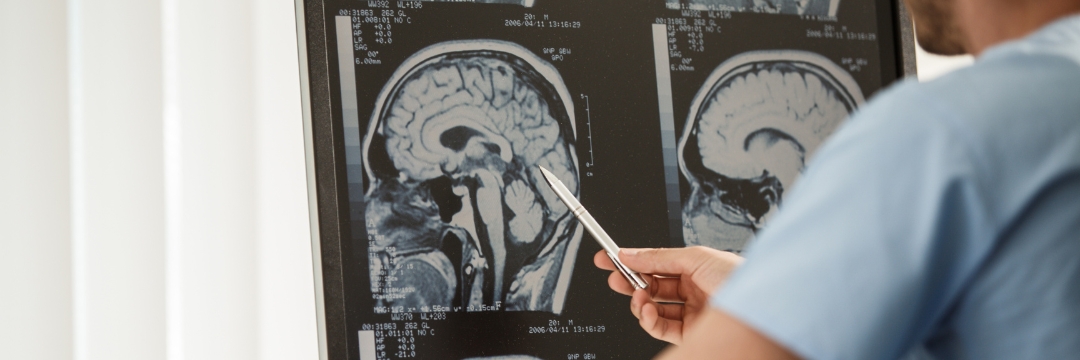How to Read CT Scan – Explained | Sai Hospital, Haldwani

When you have been given an MRI report and you are left looking at it, not knowing what it means, you are not the only one. With the medical terms, the measurements, and all the terms you have never heard of in your life before, this can be overwhelming. How to read MRI report is a question that we at Sai Hospital Haldwani frequently hear patients enquiring about – what exactly the content of this report is. That is why we developed this patient-friendly guide on how to read a patient report document containing information about MRI reports with confidence.
It could be the wait time to meet with your doctor or your general lack of knowledge to remain more updated on your health. This guide simplifies the fundamentals for either a meeting with doctors or simply being more aware of what you are reading, while not necessarily requiring a medical degree.
What is an MRI Report?
Before examining the way of reading MRI report results, it is worth knowing what an MRI is. MRI (Magnetic Resonance Imaging) is non-invasive. It is a scan performed on the basis of magnetic fields and radio waves that helps to form a detailed image of the soft tissues, internal organs, and bones.
The scan is read by the radiologist, who is a qualified doctor trained to read such images and compile a report. Your referring physician is then sent the report, which they use to diagnose or exclude a condition in common with other clinical results.
The report includes –
- Patient details
- Clinical history or reason for the MRI
- Description of the area scanned
- Detailed findings
- Impression (summary or conclusion)
Now, we can go step-by-step on how to read the contents of MRI reports.
How to Read an MRI Report Step-by-Step
Start With the Basics
Check the top of the report for the following –
- Patient Name and Age – Ensure the report belongs to you.
- Date of Exam – Important for tracking disease progression.
- Exam Type and Body Area, e.g. – MRI Lumbar Spine, MRI Brain with contrast.
This assists in assuring you that you are reading the correct report and places the results into perspective.
Clinical Indication – The ‘Why’ Behind the Scan
The reasoning behind the issued MRI has been explained in this section. It may indicate as follows –
- “Patient with chronic headaches.”
- “History of lower back pain radiating to left leg.”
- “The knee pain is post-traumatic.”
This knowledge will enable you to comprehend within the proper context. It puts the rest of the report in perspective, and it provides you with what the radiologist was specifically seeking.
Technique – How the Scan Was Performed
You may see notes like –
- “Multiplanar, multisequence MRI images obtained.”
- “Contrast-enhanced use of sequences.”
This segment does not require as much interpretation by patients. Although in the case of contrast, it was probably because the physician needed to see a sharper picture of blood vessels, inflammation, or a tumor.
Findings – The Detailed Interpretation
Here’s the core of how to read MRI report documents. This part provides what the radiologist saw and specifies any abnormalities, measurements, and structures that are important. In simplified terms, let us examine it by using ordinary examples –
Brain MRI
You might see –
- “No acute infarct or hemorrhage.”
- “Mild white matter changes suggestive of small vessel disease.”
- “No mass or midline shift.”
These are generally good signs. Anything like “mass,” “enhancing lesion,” or “restricted diffusion” may indicate a more serious concern.
Spine MRI
A report might say –
- “L4-L5 disc bulge indenting the thecal sac.”
- “No neural foramininal narrowing.”
- “Degenerative disc disease.”
All that to say in plain terms, that may translate into an innocuous slipped disc or spinal wear-and-tear. This may not be necessarily a risk factor, but perhaps the cause of back pain.
Joint MRI (Example – Knee or Shoulder)
Look for terms like –
- “Meniscal tear” – common in knees.
- “Partial-thickness rotator cuff tear” – often seen in shoulders.
- “Joint effusion” – seepage of fluid with injury or inflammation.
What counts here is the tone and words. Any words that describe the problem, such as mild, early, or age-related changes, are a sign that the issue isn’t urgent.
Impression – The Summary You Need to Focus On
This is the part most patients (and many doctors) look at first. The impression sums up the findings in a few lines. For example –
- “No acute intracranial abnormality.”
- “L5-S1 disc herniation with left-sided nerve root compression.”
- “Mild degenerative changes in the cervical spine.”
If you are trying to figure out how to read MRI report conclusions quickly, this is your go-to section.
Terms and What They Mean
MRI reports often use complicated terms. Here’s a quick cheat sheet for common ones –
| Term | What It Means |
| Herniation | A bulging disc pressing on nerves |
| Lesion | An abnormal area; could be inflammation, a tumor, or an infection |
| Atrophy | Shrinkage of tissue, often age-related |
| Effusion | Fluid buildup in joints or soft tissue |
| Enhancement | How contrast dye interacts with tissue (often to detect tumors or infection) |
This knowledge of vocabulary makes it so much easier to learn the process of how to read MRI report.
When to Be Concerned About and When?
Not every abnormal term is a cause for panic. Reports often mention minor degenerative changes, especially in patients over 40. The real red flags are –
- “Mass effect”
- “Restricted diffusion” (in brain scans)
- “Significant spinal stenosis”
- “Enhancing lesion”
- “Bone marrow signal abnormality”
In case any of these is mentioned in your report, your doctor will probably want to tell you about additional tests or a specialist appointment. At Sai Hospital Haldwani, the team of specialised neurologists, orthopedists, and radiologists provides the correct interpretation and their prompt next course of action.
Is It Safe to Interpret MRI Results Without A Doctor?
There should be no stigma in wanting to learn more about your health with a doctor. But remember, how to read MRI report details accurately still requires a trained eye. Here’s why –
- A radiologist compares the previous images with up-to-date ones to detect slight changes.
- Others might sound frightening, yet they are harmless.
- Context is everything—your symptoms and history matter.
This is why we appreciate at Sai hospital at Haldwani always advising follow-up by a physician who has been referred by the doctor of the referring physician after getting the MRI report. Our staff will make sure that all our patients walk out with clarity, not confusion.
MRI Services at Sai Hospital, Haldwani
We provide advanced MRI scanning with the following features –
- 1.5T high-resolution MRI for brain, spine, joints, and abdomen.
- Contrast studies, when needed, with allergy screening.
- Quick reporting turnaround.
- Cross-disciplinary diagnosis with the cooperation of in-house experts.
The radiology department in our facility pays much attention to educating the patients and making sure that each report is explained properly before intervention.
Final Thoughts
Being knowledgeable on how to read MRI report summaries and findings does not necessitate that you interpret them yourself. It will enable you to ask excellent questions, be aware, and be an active participant in your health. Keep in mind: The ideal scenario occurs when the technology meets medical study and patient education. This philosophy is something we live by at Sai Hospital Haldwani.
Commonly Asked Questions
- What is the meaning of the term degenerative changes in an MRI report?
It usually refers to age-related wear and tear in joints or the spine, not necessarily a major issue.
- Do I always need contrast dye for an MRI?
Not always. Contrast occurs when doctors require something more detailed, like in the case of a tumor or inflammation.
- What is the period for getting an MRI report?
In Sai Hospital Haldwani, you are most likely to get your report ready in 24-48 hours.
- Is it possible to get a copy of my MRI scan and the report?
Yes. Digital or paper copies can be given to patients when requested by them for second opinions or personal records.
- Should I be worried if my report says “abnormality”?
Not necessarily. Many abnormalities are benign. Your doctor will interpret the significance based on your symptoms and history.



